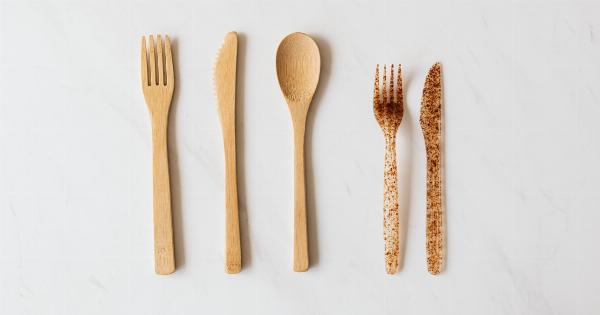Food poisoning is a common problem that can be easily avoided by following some simple kitchen safety tips. Whether you are a seasoned chef or a novice cook, it is essential to take necessary precautions to prevent foodborne illnesses.
In this article, we will discuss ten important tips to keep your kitchen safe and protect yourself and your loved ones from the dangers of food poisoning.
1. Cleanliness is Key
The first step towards a safe kitchen is maintaining cleanliness. Always wash your hands before handling food, especially after using the bathroom, handling raw meat, or touching any potentially contaminated surfaces.
Keep your kitchen countertops, cutting boards, and utensils clean by washing them with hot, soapy water. Regularly replace kitchen sponges and dishcloths that can harbor dangerous bacteria.
2. Separate Raw and Cooked Foods
Prevent cross-contamination by separating raw and cooked foods. Use separate cutting boards and utensils for raw meats and vegetables. Never place cooked food on a plate that previously held raw meat.
This will help to avoid the transfer of harmful bacteria from raw to cooked foods.
3. Proper Food Storage
Storing food correctly is vital to prevent bacterial growth. Keep raw meats, poultry, and seafood in sealed containers on the lowest shelf of the refrigerator to avoid cross-contamination. Ensure that your refrigerator is set at or below 40°F (4°C).
Always check the expiration dates and discard any expired or questionable food items.
4. Cook Food Thoroughly
Cooking food at the right temperature is crucial to kill bacteria and other harmful pathogens. Use a food thermometer to ensure meats, poultry, and seafood are cooked to their appropriate internal temperatures.
For example, chicken should be cooked to an internal temperature of 165°F (74°C) while ground meats should reach 160°F (71°C).
5. Avoid the Danger Zone
The “danger zone” refers to the temperature range between 40°F (4°C) and 140°F (60°C) where bacteria multiply rapidly. To keep food out of this danger zone, thaw frozen foods in the refrigerator, not on the countertop.
When serving food, use a warming tray or chafing dish to keep it hot, or place it in the refrigerator to keep it cold.
6. Properly Wash Fruits and Vegetables
Fruits and vegetables can carry traces of pesticides, soil, and other contaminants. Thoroughly washing them under running water can help eliminate these risks.
It is essential to wash even those with inedible skins, as cutting through the skin can transfer bacteria to the inside of the fruit or vegetable.
7. Be Mindful of Leftovers
Refrigerate leftovers within two hours of cooking to prevent bacterial growth. Store them in shallow containers to allow for quick and even cooling.
When reheating leftovers, make sure they reach a temperature of at least 165°F (74°C) to kill any bacteria that may have grown.
8. Don’t Forget about Hand Hygiene
Handwashing is crucial when it comes to kitchen safety. Always wash your hands before and after handling food, especially raw meats, eggs, and seafood. Use warm water and soap, and scrub for at least 20 seconds.
If soap and water are not available, use hand sanitizer with at least 60% alcohol content.
9. Be Cautious with Eggs
Eggs can carry salmonella, a bacterium that causes food poisoning. It is essential to cook eggs thoroughly until the yolk is firm.
Avoid consuming raw or undercooked eggs or dishes containing raw eggs, such as homemade mayonnaise or Caesar salad dressing.
10. Educate Yourself
Stay informed about food safety guidelines and recommendations. Keep up-to-date with the latest information on food recalls and outbreaks. Educate yourself on safe cooking temperatures and proper handling techniques.
By staying informed, you can take necessary precautions and protect yourself and your family from foodborne illnesses.






























